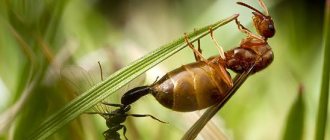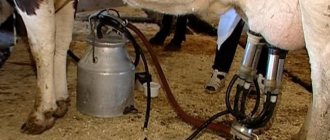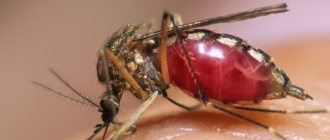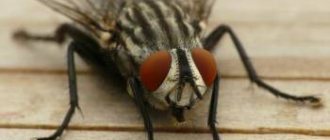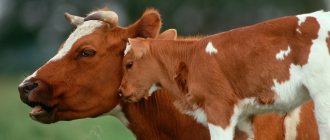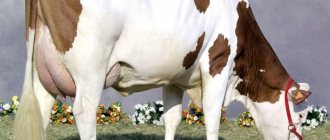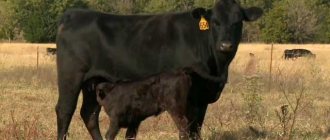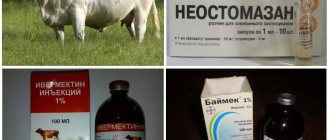Consumption of milk and dairy products in Russia is 230 kg per year per person, which is 1.5-2 times lower than in developed European countries : Germany, Finland, Switzerland.
Compared to the Soviet period, the consumption of dairy products has decreased significantly - by 40-50% . This is due to the inaccessibility of milk, butter and cheeses to low-income populations. High prices for dairy products can be partly explained by insufficient production due to a reduced number of cows, problems with the feed supply and import restrictions.
But how much did milk yield and the number of cows change after the collapse of the USSR and the destruction of the collective farm system?
Features of domestic breeds
Today, almost 250 cow breeds are known in Russia. The most widespread among them is the black-and-white one. Local breeds are characterized by increased resistance to changeable weather conditions; they survive heat and frost with equal success.
To assess the changes that occurred with the livestock population in Russia during different periods of its history, let us turn to official statistics.
By the way, prices for some meat and dairy breeds of cows start from 70 thousand rubles.
Why do we see them so rarely?
Nowadays, keeping cows on pasture is already a rarity. Animals grazing can still be found in the Volga region, in the south, in the Siberian Federal District - in regions where there are still many private farms. In the central part of Russia, stall housing dominates - fully automated farms. This technology does not provide for grazing cows, so they are not visible. Most new industrial farms are like this.
Another reason why cows are rarely seen now is that there are almost no farms near large cities. This is unprofitable due to expensive land: such a complex requires a huge area to grow feed (about one or two hectares per cow).
Current agricultural statistics in the RSFSR
By the time of the formation of the young Soviet Republic in the Russian Empire, there were 17.3 million heads of them - this is more than half (52.4%) of the number of cattle (hereinafter referred to as cattle).
Rice. 1. Comparative characteristics of the cattle population (including cows), million heads
On the eve of the collapse of the Soviet Union, the livestock was not much higher than the pre-revolutionary level (only 19%), but already accounted for 36.1% of the number of cattle.
Rice. 2. Share of cows in the cattle population in 1915-1990, in%
What are the features of stall housing?
These are the farms that bring in the most milk. This is a modern complex where animals are always kept inside and go for milking or for a walk around in case of loose housing. The herd in the stalls has the same type of diet with a certain composition necessary for high productivity. It contains all the necessary micro- and macroelements and nutrients.
Stall housing increases production efficiency, and new technologies reduce labor costs. Such mechanized farms require only a small number of staff. Around the world, dairy production is moving from small-scale to large-scale production with the concentration of large numbers of livestock in one location. Pasture farming is no longer profitable.
Recently, in the private sector there has been a decrease in the number of livestock, but the number of dairy products produced is only growing due to industrial production. To compare efficiency, Roskachestvo cites the following indicators: a domestic cow brings 6-10 liters of milk per day and 3.5-3.9 tons per year, a cow in advanced production produces up to 42 liters per day and 12 tons per year.
Milk is harmful. Is it true that it saves you from “factory” diseases? More details
Recent history
With the formation of the new state of the Russian Federation in place of the collapsed power, agriculture was falling apart before our eyes. And the sharp reduction in livestock numbers on farms of all categories is clear confirmation of this. In recent years, the number of cow herds has remained at the level of 8.0 million heads (+- 0.1 million).
Rice. 3. Comparative characteristics of the cattle population (including cows), million heads
In the cattle population, the share of cows remains virtually unchanged, although it is slowly declining (from 43.5% in 2013 to 43.0% as of April 1, 2019).
Rice. 4. Share of cows in the cattle population in 1990-2019, in% (2019 – as of April 1)
If in farms of all categories the change in their number in the period from 2013 to the 1st quarter of this year is not so noticeable, then in agricultural organizations the reduction was 7.7% (from 3,532 to 3,261 heads), in household farms - by 12.2% (from 3,880 to 3,419), but the farm herd increased by 28% (from 1,019 to 1,304).
Table 1. Livestock by farm category, 2022, thousand heads
| 2013 | 2014 | 2015 | 2016 | 2017 | 2018 | 2019 at 1.04 | |
| Farms of all categories | 8 431 | 8 363 | 8 115 | 7 966 | 7 951 | 7 943 | 7 984 |
| agricultural organizations | 3 532 | 3 439 | 3 387 | 3 359 | 3 316 | 3 283 | 3 261 |
| households of the population | 3 880 | 3 766 | 3 622 | 3 427 | 3 400 | 3 361 | 3 419 |
| peasant (farm) farms | 1 019 | 1 058 | 1 106 | 1 180 | 1 235 | 1 299 | 1 304 |
Source: Rosstat
42.8% of the livestock is concentrated on household farms, while farmers account for 16.3%. Moreover, this ratio is different in different regions of Russia.
Rice. 5. Subjects of the Federation with the largest herd at the beginning of 2019, thousand heads (increase compared to last year, thousand heads)
How much dairy products are consumed in Russia?
On average, one person in Russia now accounts for up to 241 kg of dairy products per year, if we count in “milk” (1 kg of cheese on average contains 12-20 kg of milk, 1 kg of butter - 20 kg, etc.) . In total, about 29.5 million tons are consumed in the country, according to the Roskachestvo website.
At the same time, due to the trend towards healthy eating, the volume of consumption of dairy products with milk fat substitutes is noticeably reduced. Russians buy fewer cheese products instead of cheeses, and less margarines and spreads instead of butter.
Fair milk. What will product labeling give ordinary customers? More details
Results of agricultural censuses
Agricultural censuses conducted in Russia also make it possible to estimate how many animals are in a cow herd. Russian history counts only three of them. The first All-Russian agricultural census took place back in 1916-17. The next one 80 years later, in 2006, and the third, the last one to date, in 2016.
According to 1916/17 data, there were 17.3 million animals in the Russian Empire. The vast majority of them are in the European part of the country.
Table 2. Number of cows according to VSHP - 2016/17.
| Regions | Million heads |
| Russian Empire - total | 17,3 |
| European part | 11,8 |
| Siberia | 4,1 |
| Steppe region | 1,3 |
Source: Central Statistical Committee of the Ministry of Internal Affairs
The All-Russian Agricultural Surveys held in the Russian Federation made it possible to assess the number of livestock in all categories of farms: from the population to large and medium-sized agricultural enterprises, and its changes over the ten-year intercensal period.
Over these 10 years, the number of cows decreased by 16.5%. The reduction affected primarily large and medium-sized enterprises (by 45.7%) and households (by 30.1%).
“The reduction in the number of cows in the private farmsteads of Russians is a long-standing trend, and it is associated primarily with the extinction of the traditional Russian village” (Agricultural Portal).
But small businesses have significantly increased their herd:
- small agricultural enterprises (4 times);
- peasant farm (3 rubles);
- individual enterprises (2.5 rubles).
Table 3. Cattle population based on materials from the All-Russian Agricultural Exhibition in the Russian Federation, thousand heads
| Categories of farms | VSKHP-2006 | VSKHP-2016 | ||
| Cattle | including cows | Cattle | including cows | |
| Farms of all categories | 23 514,2 | 9 569,3 | 19 342,0 | 7 993,9 |
| agricultural organizations | 11 225,5 | 4 229,9 | 8 598,1 | 3 368,5 |
| large and medium-sized organizations | 10 454,7 | 3 900,1 | 5 566,2 | 2 117,3 |
| small businesses | 692,3 | 301,5 | 2 922,8 | 1 210,2 |
| subsidiary plots of non-agricultural organizations | 78,5 | 28,3 | 109,1 | 41,0 |
| peasant (farmer) households and individual entrepreneurs | 979,5 | 393,7 | 2 564,3 | 1 167,4 |
| peasant (farm) farms | 858,1 | 345,1 | 2 276,0 | 1 048,0 |
| individual entrepreneurs | 121,4 | 48,5 | 288,4 | 119,4 |
| households of the population | 11 309,2 | 4 945,8 | 8 179,6 | 3 458,0 |
Source: Rosstat
This is interesting! Roskoshestvo, based on testing results, named the best and worst milk
“Made with us” and on Yandex.Zen
Livestock farming is a much more inertial branch of agriculture and less dependent on external factors than crop production. Therefore, in a graphical representation, we combine records with historical dynamics for greater compactness and clarity. The qualitative indicators that many are interested in - meat yield per head of livestock, milk yield per cow, etc., in most cases have the same dynamics: moderate growth in the Soviet period, a hitch in the 90s, fairly rapid growth since the 2000s . — and the previous highs are far behind us everywhere.
Meat production (hereinafter - in slaughter weight) in Russia during the Soviet period generally grew, but the dynamics were torn: there were periods of “stagnation” and outright failures. Thus, a large-scale drop (by ¼ or 1.3 million tons) occurred in 1964 - the result of an attempt to fulfill the seven-year plan at any cost. A serious drop in the prosperous year of 1976 (by 10% or 0.8 million tons) was a consequence of the severe crop failure of 1975, which forced the reduction of livestock numbers. The end of the 70s - the beginning of the 80s was a crisis period in agriculture, when it became obvious that it was impossible to continue to grow extensively. The crisis was partially overcome, and rapid growth followed in the second half of the 1980s, with meat production peaking at 10.11 million tons in 1990.
The next decade was marked by a catastrophic decline: at the end of the 90s, meat production was below the level of 1959. In the early 2000s. — slight recovery due to the devaluation effect. In the mid-2000s. a set of measures was taken to support the meat industry (crediting, increasing import duties, etc.) - as a result, intensive production growth began in 2006, which continues to this day. In 2022, the Soviet peak was blocked; in 2018, meat production reached 10.63 million tons; by the end of 2022, 10.8-10.9 million tons are expected.
© Photo from open sources
Historically, the main type of meat in Russia was beef (in Khrushchev’s time it was rivaled by pork). However, in market conditions, it is objectively inferior in competitiveness to poultry and pork, especially in the Russian climate - beef cattle breeding is characterized by large specific investments, long-term payback, and is most effective when year-round grazing is possible.
The peak of beef production in Russia was reached in 1990 - 4.33 million tons, all other maximum indicators were close to this date. At the same time, they were partially provided by the growing “irrevocable” slaughter; the number of cattle reached its peak by 1987. Subsequently, production declined: in the 90s - quickly, in the 2000s - smoothly. In the 2010s Beef production has stabilized at 1.6 million tons per year - this is lower than in 1959, but the bulk of the volume comes from households, which are now assessed more conservatively by Rosstat.
© Photo from open sources
The most popular type of meat in modern Russia is poultry . During the Soviet period, its production developed weakly: at its peak, in 1989, output amounted to 1.83 million tons - 2.3 times less than beef, and 1.9 times less than pork. In the 90s, production dropped to the level of the early 70s, but already in 1998 its recovery began, and in 2007 the Soviet maximum was exceeded. This reflected the high efficiency of investments in the industry due to the short production cycle and Russia’s supply of cheap grain. Over the next 10 years, poultry meat production increased another 2.5 times, approaching 5 million tons. Moreover, in 2018-2019. production has stabilized, reflecting market saturation.
© Photo from open sources
Pork production during the Soviet period showed the most uneven dynamics of all types of meat, because... Pig farming, in conditions of underdevelopment of poultry meat farming, was the most “operational” industry. For example, in 1964, pork production fell by more than 40%, since a year earlier, in pursuit of meeting the plan, the number of pigs decreased from 36.7 to 19.2 million. And a severe crop failure in 1975 led to a reduction in the number of pigs from 36. 5 to 27.8 million, as a result, the next year pork production fell by more than ¼; the achieved level of production could only be exceeded after 8 years.
The peak of the Soviet period - 3.5 million tons in 1989 - was unattainable for a long time, but in the second half of the 2000s. A boom began in Russian pig farming, and in 2022 the record was broken. In 2018, pork production reached 3.74 million tons; over 9 months of 2022, production in live weight increased by 4.7%. At the same time, the current pig population is 24-25 million versus 40 million in the late 1980s.
© Photo from open sources
Milk production in Russia during the Soviet period developed in spurts: several years of growth were followed by several years of stabilization or even a slight rollback. However, in general, the dynamics were progressive, and in 1989 production reached an absolute maximum of 55.7 million tons. During the 90s, milk yield decreased by 1.7 times, reflecting not only the crisis in agriculture and the drop in the level of life, but also an objective reduction in needs due to the displacement of animal fats by vegetable fats (in developed countries this process has been going on for a long time). In the 21st century milk production in Russia shows wave-like dynamics, with a downward trend until recently: after stabilizing in the mid-2010s. The last 3 years have seen growth that may become sustainable.
According to current data from Rosstat, by the end of 2022, milk production should exceed 31 million tons (+2.1% over 11 months). This corresponds to the level of 1957, but at the same time, current consumption, even with maximum estimates of the share of imports, corresponds only to production in 1965.
© Photo from open sources
Egg production in Russia grew almost continuously during the Soviet period. The peak was reached in 1988 - 49.1 billion units. By 1996, production dropped below the 1974 level, but then began to gradually recover. In 2022, egg production reached 44.9 billion pieces, and it remained at the same level in 2019 (-0.2% over 11 months). It is noteworthy that the growth rate of production in the current century is much lower than in the Soviet period, which, in conditions of insignificant imports, indicates a high saturation of the domestic market and its self-sufficiency.
It would be interesting to compare data on egg production in tonnage - perhaps the picture would be slightly different - however, it was not possible to find them from Rosstat, and international sources (primarily FAO) use conditional coefficients for recalculation.
© Photo from open sources
Wool production in Russia reached its maximum level in the mid-1970s and remained there, with minor fluctuations, until 1990. Thus, the two best results were 234.2 thousand tons in 1979 and 230 thousand tons in 1989 g., and for another 8 years the figures were recorded in the range of 226-227.5 thousand tons. During the 90s, wool shearing fell 5.5 times - up to 40 thousand tons, after which it increased slightly, fluctuating in recent years within the range of 55-57 thousand tons. In the conditions of replacement of wool with artificial and synthetic fibers, Russia objectively does not need a significantly higher level of production.
© Photo from open sources
Prepared according to the statistical collections of the Central Statistical Office of the RSFSR, the Central Statistical Office of the USSR and Rosstat, as well as online statistics from Rosstat.
Where do the cattle live?
Farm animals are most often kept in specialized non-residential premises (stall, paddock, barn, stable, pigsty, barn, rabbitry, livestock building, farm, shed, barnyard, poultry house, apiary, and so on). Livestock in Russia was previously divided into working and commodity-productive.
Interesting materials:
How to add favorites in iOS 14? How to add Qiwi wallet to a payment method? How to add a comment to a Qiwi payment? How to add dye to candles? How to add a personal account to government services? How to add a mobile authenticator to Steam? How to add mp3 to Facebook? How to add music to Inshot without copyright? How to add a set of stickers to VK? How to add multiple photos to one post?
How many products are made from milk powder?
Powdered milk is now almost never used for milk production, as it is less profitable due to the myths surrounding such products and due to the emergence of more efficient production methods. For example, thanks to ultra-pasteurization, it is now possible to transport fresh product anywhere in the country (the long shelf life was precisely the advantage of “drying”). And it turns out more expensive if you first pay for the drying procedure, and then restore milk from this powder.
Now “drying” is used in two cases. Firstly, for products where it is necessary to increase the mass fraction of protein, for example yoghurts. In this case, dry milk is added to normalized, whole or skim milk.
Secondly, it allows you to compensate for the shortage of raw milk in winter. In this case, the manufacturer is obliged to indicate what kind of milk the product is made from. The buyer can even see two compositions on some packages, with a summer and a winter formula. If it is important for a plant to preserve product quality as much as possible, then the share of reconstituted milk is very low.
